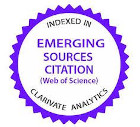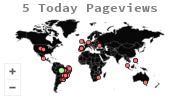Governança colaborativa como fator principal na formação de redes locais: comparativo entre dois casos
DOI:
https://doi.org/10.23925/2178-0080.2024v26i3.64483Palavras-chave:
governança colaborativa, formação de redes, indicadores de redesResumo
Afirma-se que a governança colaborativa- GC é o principal fator de formação de redes, presente desde os primeiros movimentos de criação do grupo. Como teoria utilizam-se a da abordagem social de redes e governança colaborativa, ambas afirmando que as relações sociais são o pilar de formação e desenvolvimento de redes. Apresentam-se dois casos de formação de redes, um do município de Juruaia-MG, sobre moda íntima, que apresenta a governança colaborativa. O outro é de empresários do negócio de condutores elétricos de Guaxupé-MG, que não conseguiram criar um grupo. A conclusão sustenta a importância da GC na formação de redes. A proposta é inovadora e abre um campo de investigação e de gestão sobre a GC na formação de redes.
Referências
Ansell, C., & Gash, A. (2008). Collaborative governance in theory and practice. Journal of Public Administration Research and Theory, 18(4), 543–571. https://doi.org/10.1093/jopart/mum032
Bleger, J. (2003). BLEGER, J. Temas de Psicologia - Entrevista e Grupos. Martins Fontes.
Bortolaso, I., Bortolaso, I. V., Verschoore, J. R., & Jr., J. A. valle A. (2013). Práticas de Gestão de Redes de Cooperação Horizontais: Proposição de um Modelo de Análise. Contabilidade Gestão e Governança, 16(3). https://www.revistacgg.org/contabil/article/view/543
Chin, W. Y., & Mees, H. L. P. (2021). The rising stars of social innovations: How do local governments facilitate citizen initiatives to thrive? The case of waste management in Brussels and Hong Kong. Environmental Policy and Governance, 31(5), 533–545. https://doi.org/10.1002/EET.1953
Colet, D. S., & Mozzato, A. R. (2018). A cooperação no contexto das transformações sociais e do desenvolvimento local: O caso da rota das Salamarias - RS. Gestão & Regionalidade, 34(102). https://doi.org/10.13037/gr.vol34n102.4180
Cui, C., & Yi, H. (2020). What Drives the Performance of Collaboration Networks: A Qualitative Comparative Analysis of Local Water Governance in China. International Journal of Environmental Research and Public Health, 17(6), 1819. https://doi.org/10.3390/ijerph17061819
da Silva, L. M., Bitencourt, C. C., Faccin, K., & Iakovleva, T. (2019). The Role of Stakeholders in the Context of Responsible Innovation: A Meta-Synthesis. Sustainability, 11(6), 1766–1781. https://doi.org/10.3390/SU11061766
Fuhse, J. A., & Gondal, N. (2022). Networks from culture: Mechanisms of tie-formation follow institutionalized rules in social fields. Social Networks, in press. https://doi.org/10.1016/J.SOCNET.2021.12.005
Fukuyama, F. (2016). Governance: What Do We Know, and How Do We Know It? Annual Review of Political Science, 19, 89–105. https://doi.org/10.1146/annurev-polisci-042214-044240
Giglio, E. et al. (2015). Business Networks: Concepts, Methodologies and Research | Amazon.com.br (E. et al. Giglio (ed.)). Global South.
Giglio, E. M. (2015). Networks: The facts, the format, the concepts. In GIGLIO, E (edit) Business Networks concepts, methodologies, and research (GlobalSouth (ed.)).
Giglio, E. M., Ryngelblum, A., & Jabbour, A. B. (2020). Relational governance in recycling cooperatives: A proposal for managing tensions in sustainability. Journal of Cleaner Production, 260, 1210–1236. https://doi.org/10.1016/j.jclepro.2020.121036
Gorod, A., Hallo, L., & Nguyen, T. (2018). A Systemic Approach to Complex Project Management: Integration of Command-and-Control and Network Governance. Systems Research and Behavioral Science, 35(6), 811–837. https://doi.org/10.1002/sres.2520
Granås Bardal, K., Reinar, M. B., Lundberg, A. K., Bjørkan, M., Bardal, C. :, Reinar, K. G. ;, Lundberg, M. B. ;, Bjørkan, A. K. ;, & Factors, M. (2021). Factors Facilitating the Implementation of the Sustainable Development Goals in Regional and Local Planning—Experiences from Norway. Sustainability 2021, Vol. 13, Page 4282, 13(8), 4282. https://doi.org/10.3390/SU13084282
Grandori, A., & Soda, G. (2006). A Relational Approach to Organization Design. Industry & Innovation, 13(2), 151–172. https://doi.org/10.1080/13662710600684316
Granovetter, M. (1985a). Economic Action and the Problem of Embeddedness. American Journal of Sociology, 91(3), 481–510.
Granovetter, M. (1985b). Granovetter - Economic Action and the Problem of Embeddedness. American Journal of Sociology. https://doi.org/10.2307/2780199
Halinen, A., & Törnroos, J. Å. (1998). The role of embeddedness in the evolution of business networks. Scandinavian Journal of Management, 14(3), 187–205. https://doi.org/10.1016/S0956-5221(98)80009-2
Holland, J. H., & Mimnaugh, H. (1996). Hidden Order. In Helix Bks. http://www.goodreads.com/book/show/183954.Hidden_Order
Huxham, C., Vangen, S., Huxham, C., & Eden, C. (2000). The Challenge of Collaborative Governance. Public Management: An International Journal of Research and Theory, 2(3), 337–358. https://doi.org/10.1080/14719030000000021
Jones, C., Hesterly, W. S., & Borgatti, S. P. (1997). a General Theory of Network Governance : Exchange Conditions and Social Mechanisms. Academy of Management Review, 22(4), 911–945.
Klijn, E. H., & Koppenjan, J. (2015). Governance networks in the public sector. In Governance Networks in the Public Sector. https://doi.org/10.4324/9781315887098
Lehtonen, K., & Uusikylä, P. (2021). How Do Networks Reflect Collaborative Governance? The Case of a Sport Policy Program. International Journal of Environmental Research and Public Health, 18(14), 7229. https://doi.org/10.3390/IJERPH18147229
Long, S. (1992). A structural analysis of small groups. In A structural analysis of small groups.
May, C. K. (2022). Complex adaptive governance systems: a framework to understand institutions, organizations, and people in socio-ecological systems. Socio-Ecological Practice Research, 4(1), 39–54. https://doi.org/10.1007/S42532-021-00101-7
Mendonça, F. M. de, Dos Reis Teixeira, M. P., Bernardo, D. C. dos R., & Netto, H. P. da F. (2012). Condicionantes territoriais para formação, desenvolvimento e estruturação de arranjos produtivos locais: um estudo comparativo em APLs de confecção do estado de Minas Gerais. RAI Revista de Administração e Inovação, 9(3), 231–256. https://doi.org/10.5773/RAI.V9I3.913
Milagres, R. das M., Silva, S. A. G. da, & Rezende, O. (2019). Collaborative Governance: The coordenation of governance networks. Revista de Administração FACES Journal, 18(3), 1–25. https://doi.org/10.21714/1984-6975faces2019v18n3art6846
Montanaria, A., & Saberi, A. (2010). The spread of innovations in social networks. Proceedings of the National Academy of Sciences of the United States of America. https://doi.org/10.1073/pnas.1004098107
Morçöl, G., Yoo, E., Azim, S. F., & Menon, A. (2021). The collaborative governance networks literature: A comprehensive and systematic review. Handbook of Collaborative Public Management, 36–49. https://doi.org/10.4337/9781789901917.00013
Nohrstedt, D., & Bodin, Ö. (2020). Collective Action Problem Characteristics and Partner Uncertainty as Drivers of Social Tie Formation in Collaborative Networks. Policy Studies Journal, 48(4), 1082–1108. https://doi.org/10.1111/PSJ.12309
Pirotti, T. M. C., Bitencourt, C. C., & Wegner, D. (2017). “We are not going to win alone”: Collaborative practices and collective gains in a network of solidarity economy in Brazil. Revista de Gestao Social e Ambiental, 11(3), 37–55. https://doi.org/10.24857/RGSA.V11I3.1375
Ranga, M., & Etzkowitz, H. (2013). Triple Helix Systems: An Analytical Framework for Innovation Policy and Practice in the Knowledge Society. Industry and Higher Education, 27(4), 237–262. https://doi.org/10.5367/ihe.2013.0165
Rogers, B. (2022). The Social Construction of Leadership Power. In F. English (Ed.), The Palgrave Handbook of Educational Leadership and Management Discourse (pp. 425–443). Springer International Publishing. https://doi.org/10.1007/978-3-030-99097-8_132
Rojas-Bermúdez, J. G. (1970). Introdução ao Psicodrama. Ágora.
Sakanga, L. M., Mwanaumo, E., & Thwala, W. D. (2020). Identification of variables proposed for inclusion into a regional railway corridor transportation economic regulatory framework: A case of the Southern African Development Community North-South Corridor. Journal of Transport and Supply Chain Management, 14(2014), e1–e11. https://go.gale.com/ps/i.do?p=AONE&sw=w&issn=19955235&v=2.1&it=r&id=GALE%7CA641962298&sid=googleScholar&linkaccess=fulltext
Sarate, J. A. R., & Macke, J. (2015). Territories as collaborative networks: Concepts and elements of commitment. IFIP Advances in Information and Communication Technology, 463, 413–420. https://doi.org/10.1007/978-3-319-24141-8_37
Segato, F., & Raab, J. (2019). Mandated network formation. International Journal of Public Sector Management, 32(2), 191–206. https://doi.org/10.1108/IJPSM-01-2018-0018
Soares, S. M., & Ferraz, A. F. (2007). Grupos operativos de aprendizagem nos serviços de saúde: sistematização de fundamentos e metodologias. Escola Anna Nery, 11(1), 52–57. https://doi.org/10.1590/s1414-81452007000100007
Tizziotti, C. P. P., Truzzi, O. M. S., & Barbosa, A. de S. (2019). Arranjos produtivos locais: uma análise baseada na participação das organizações locais para o desenvolvimento. Gestão & Produção, 26(2). https://www.academia.edu/52982998/Arranjos_produtivos_locais_uma_análise_baseada_na_participação_das_organizações_locais_para_o_desenvolvimento
Varella Miranda, B., Ross, B., Franken, J., & Gómez, M. (2022). How do transaction costs, capabilities and networks influence the procurement strategies of small agri-food firms? Evidence from the wine industry. Journal of Small Business and Enterprise Development, 29(4), 550–573. https://doi.org/10.1108/JSBED-01-2021-0007
Vriens, E., Buskens, V., & de Moor, T. (2021). Networks and new mutualism: How embeddedness influences commitment and trust in small mutuals. Socio-Economic Review, 19(3), 1149–1170. https://doi.org/10.1093/SER/MWZ050
Zweifel, B., & Haegeli, P. (2014). A qualitative analysis of group formation, leadership and decision making in recreation groups traveling in avalanche terrain. Journal of Outdoor Recreation and Tourism, 5–6, 17–26. https://doi.org/10.1016/J.JORT.2014.03.001
Downloads
Publicado
Como Citar
Edição
Seção
Licença
Copyright (c) 2024 Lídia Cruz, Aline Lima, Ernesto Michelangelo Giglio

Este trabalho está licenciado sob uma licença Creative Commons Attribution 4.0 International License.

Este obra está licenciado com uma Licença Creative Commons Atribuição 4.0 Internacional.







